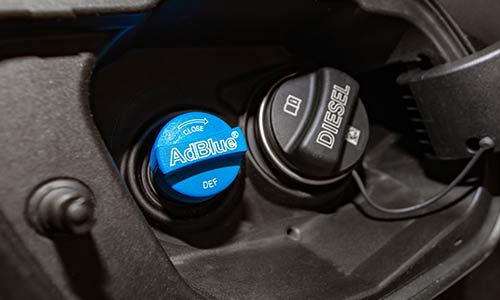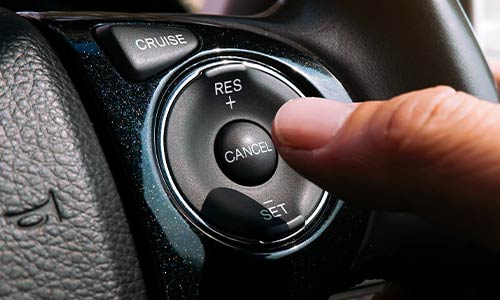
What is Distance to Empty?
Last updated October 27, 2022
There was once a time when we had to manually work out how much fuel was left in our cars. Some older cars even lacked a low-fuel warning function, which meant drivers had to rely on an analogue gauge, which wasn’t always particularly reliable.
More recent models can provide you with fairly accurate and detailed fuel insights. For instance, many modern cars feature a DTE (Distance to Empty) display, which will tell you approximately how many miles your car has left until it runs out of fuel.
In this article, we will cover the accuracy of DTE systems, how to determine when your fuel tank is truly empty – and what DTE means for electric cars. Read our helpful guide to make sure you have enough fuel or charge for every trip!
Value your car in under 30 seconds
How accurate is the Distance to Empty reading?
Overall, DTE is fairly accurate. However, the precise mileage remaining before the tank empties will depend on your driving style, the type of driving you’re doing (e.g. on motorways, rural roads or in built-up areas) and if you’re running any features that will increase your fuel consumption, such as heated seats.
Fuel gauge: Does empty mean ‘empty’?
In a lot of vehicles, you’ve got 10-15% of your fuel remaining when the needle hits the ‘empty’ marker. This is usually enough to get you to a petrol station to fill up. However, this range can vary from model to model - and even with the same vehicle depending on usage. So, you should never let your vehicle get to this point.
Fuel reserve
Car manufacturers usually incorporate a fuel reserve to help ensure that you have enough fuel to get to a station to fill up. Even if the reserve was included in the initial range, your car will tell you it’s empty when there’s a gallon or so of fuel left. This is intended to protect the engine should you decide to see how far you can get without filling up.
How far can a car go on empty?
How far you can travel on an empty depends on your car’s make and model. Once the fuel light comes on, the average distance you can drive is around 49 miles.
This varies between models – and we would not recommend trying to find this out for yourself!
DTE and electric cars
Electric cars usually display the remaining DTE range as a primary function – and drivers tend not to ignore this. Teslas and other high-end EVs will also warn you when you’re getting out of range of a charging point.
Most electric cars make it extremely hard to run out of charge without being aware of it well in advance. What’s more, unlike fuel-powered cars, they use only the energy they need to move, so when you’re sitting still in traffic, you aren’t guzzling away the little energy you have left.
Reserve battery capacity
Electric cars don’t have a reserve; when the gauge is empty, that’s it. Recovering an electric car that’s run out of fuel means physically moving it to a charging location, making it considerably more difficult to recover than a conventional engine car.
However, all electric cars reserve a percentage of battery capacity for charging and battery life reasons, as draining the battery fully on a regular basis will reduce range and shorten its life. However, that reserve power isn’t available for you to use.
History of DTE
More sophisticated engine management systems in the 70s and 80s allowed accurate measurement of the fuel used. To avoid running dry on diesel cars, where the highly pressurised pump system could get airlocks and needed to be primed, a solution had to be found.
After the invention of the ‘low-fuel’ warning light, the next step was the development of DTE, which tells drivers roughly how far they can go before the tank empties.
Can you trust DTE?
The way you drive and other variables, such as tyre pressure and road conditions can result in a significant difference in the figure shown by DTE and the actual number of miles you have left. Therefore, consider DTE as more of a ballpark figure - and fill up when the number begins to drop.
Conclusion: Don’t travel on ‘empty’!
All in all, whilst DTE will enable you to manage your fuel intake and decide when you need to fill up, it’s more of a guideline than a strict number to live by. It’s important to avoid running on empty, so don’t tempt fate – fill up when recommended.
If you’ve found that your car doesn’t have enough capacity, it may be worth selling your car to a car buying service such as webuyanycar and putting the proceeds towards a more suitable vehicle.
Other Frequently Asked Questions
This depends entirely on your type of vehicle, how big its fuel tank is - and your driving style. If you find yourself doing long journeys on the motorway, you’ll get more miles out of a quarter of a tank than if you’re constantly in stop-start city traffic.
Running out of fuel itself isn’t illegal, but this does constitute dangerous driving, and this can result in a legal punishment. If you have to stop and this causes an obstruction to other road users, you could receive a penalty of up to £100 and three points on your licence.
Firstly, you should move the car off the road, if it’s safe and possible to do so. Turn on your hazards and call for roadside assistance. The roadside mechanic will come to collect your car and transport it to the nearest service station, where you can refill it.
Alternatively, you can ask a friend or family member to bring some fuel for your vehicle in a jerry can. You’ll just need enough to drive to the next fuelling station.
If you’re beginning to run out of charge, pull over to the roadside where it’s safe. Turn on your hazards and call for a roadside recovery service.
Running out of fuel on the motorway means you’ll either need to refuel at the roadside or have your vehicle towed. You should immediately try and get to a safe space on the motorway (such as a hard shoulder) and call for roadside assistance, whilst ensuring that you aren’t causing any obstructions.
To save fuel, try to avoid idling; if you’re stuck in traffic, switch off your engine or use the stop/start feature, if your car has one. Brake and accelerate steadily and use cruise control when appropriate. Turn off any features that unnecessarily increase fuel consumption, such as heated seats and air-conditioning.
When you consistently drive with little or no fuel, it will expose all the grime in the bottom of the fuel tank and can cause this to be sucked into the fuel pump. This exposed sediment will lead to clogging and could potentially require a costly replacement.
You can find the fuel tank capacity of your car in the owner’s manual.





